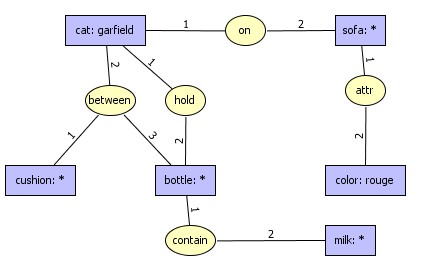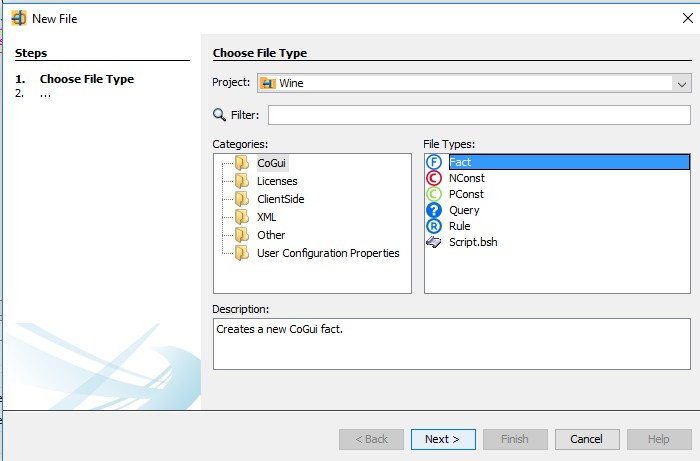Facts
A Fact is labeled bipartite graph. One class of nodes (the concept nodes) is used to represent entities of the discourse universe. A concept node is labeled by a concept type (e.g. Painter, or a conjunctive type such as Painter,Catalan) and, possibly, by an individual (e.g. Picasso). A concept node which is labeled by a concept type without an individual is called a generic concept node. Such a node represents an unidentified element of the type. For instance, contrarily to a node labeled [Painter : Picasso] representing the painter Picasso, a concept node labeled [Painter] represents “a” painter.The second class of nodes represents the relationships between the entities (represented by the concept nodes). For instance, if Guernica is an individual representing the well-known painting realized by Picasso then a relation node labeled (hasPainted) could relate the concept node [Painter : Picasso] to the concept node [Painting : Guernica]. The edge between (hasPainted) and [Painter : Picasso] is labeled by 1, and the edge between (hasPainted) and [Painting : Guernica] is labeled by 2. This edge labeling is used to represent different roles (e.g. to distinguish the subject from the complement). It is also possible to say that two different concept nodes represent the same entity by linking them by a coreference link.
Picture below is described by a fact graph:
|
conceptual graph description of the picture:
|
Create a new fact:
|
If "Fact..." action does not already appears in menu choose "Other..." and select the type of CoGui object that you want to add in your project:
|
More about fact edition:
Created with the Personal Edition of HelpNDoc: Easily create PDF Help documents



